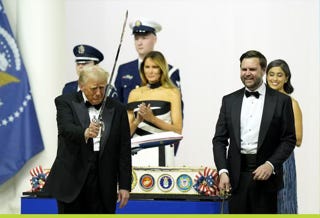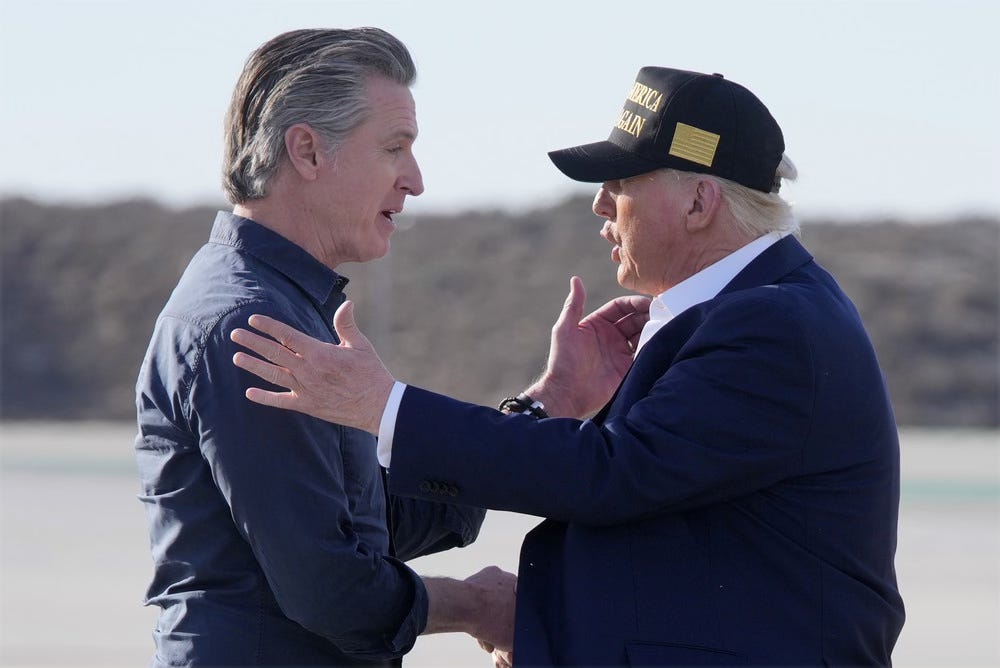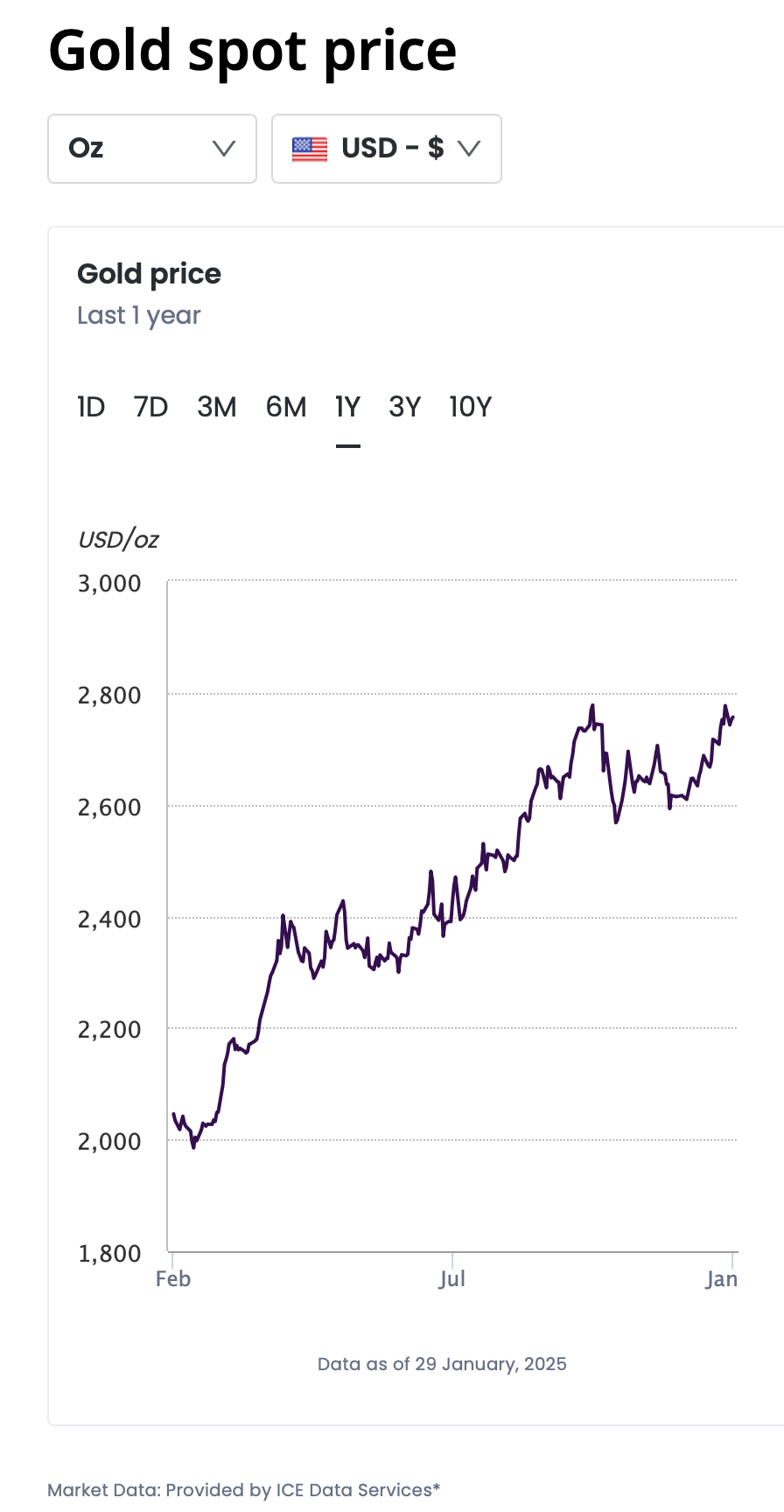A short piece titled “US Transition Concerns: Tempered Optimism” appeared early in the New Year over my byline on this platform. In the days since then, Donald Trump has been sworn in as the 47th US president. It is his second, non-consecutive term. The inaugural celebrations in Washington were glitzy reminders of the moneyed interests who want favor with the new president. But the glitz stands in sharp contrast to the consternation over both Trump’s style and his intentions.

A Flurry of Executive Orders and Domestic Uncertainty
In a rapid-fire series of executive orders, President Trump has sown deep uncertainties across multiple quarters from the ability of the federal government to perform the myriad tasks it carries out daily for taxpayers in all states due to draconian downsizing - to dismissals as retribution over perceived wrongs committed against him while out of office. Meanwhile, hundreds of thousands of Angelenos have lost their homes and all their belongings in wildfires that scorched 36,000 acres and took 28 or more lives.
Foreign Policy Upheaval
That’s just on the domestic side of the ledger. Foreign relations have not escaped the threat of Trump’s proverbial scythe. Speaking to the annual gathering of global big hitters in Davos, Switzerland, Trump threw under the bus America’s tried and true set of values when it comes to respecting another country’s sovereignty. The Trump White House could easily annex Greenland, the Panama Canal, or even Canada—America’s longstanding ally to the north—unless they do America’s bidding, Trump told an astonished group of global CEOs.
Disrupting American Norms and Commitments
It seems as if the White House itself is unaware of the consequences its actions are having on American norms, values, rules, regulations and even laws. Now, that’s the lay of the land as I see it. My intention with this post and subsequent posts is to not only to assess the Trump administration’s actions but also examine broader geopolitics and the global economy. To do so, I will use the same annual catalog of risks I cited in the first piece, Top Risks 2025 published by the Eurasia Group.
Tracking Key Risks in the G-Zero Era
My intention is to track key events throughout the year and assess how they relate to the key risks the Eurasia Group is highlighting. The ultimate goal will be an effort to answer the question whether domestic and geopolitical events over the next year combine to amplify the Eurasia Group’s top risk: the G-Zero Wins.
The report defines the G-Zero as a world where no power or group of powers is both willing and able to drive a global agenda and maintain international order. With the Trump administration in power, the global leadership deficit could near a critical inflection point.
Twelve months from now, I will ask: Are we worse off than we were at the beginning of the year. For now, the US economy is humming; inflation is about where the Federal Reserve wants it; and depending on your political perspective, government under Trump either is or isn’t serving taxpayers effectively.
January’s Key Events and Eurasia Group’s Risks
I’ll briefly highlight three sets of events in January and two key Eurasia Group risks – the “Rule of Don” and “Trumponomics.” . The highlights all revolve around the White House because frankly that’s where the headlines have been coming from 24/7.
Risk #2 – the Rule of Don raises the possibility of an “erosion of independent checks on executive power and the rule of law”. Erosion will deepen to the extent that policy decisions in Washington depend on the decisions of one powerful man in Washington.
So far that has proved to be the case - whether it’s the Friday night firing en masse of independent inspector generals, charged to serve as watchdogs on executive action, department by department or the order to halt $3 trillion in US aid and grants pending a 75-day review as to whether the aid aligns with the administration’s objectives. After a federal judge issued a temporary restraining order on the initiative, the Trump White House withdrew it. But make no mistake, the intention is to come back with an order that passes legal muster.
Risk #4 - The uncertainty and chaos that the order unleashed is related to the concerns raised by Eurasia Group’s #4 risk: Trumponomics. In this instance political point of view must be taken into account. The Eurasia Group’s bottom line: “Trump’s trade and immigration policies will weigh on US economic growth and fuel inflation.” The proof will be in the pudding – and in the meantime, watch the gold market:
As one guest on EconVue’s recent podcast remarked, it’s a good presidency if the price of gold goes down. Not so, if the price of gold goes up. So far, gold prices are up in the nascent days of Trump’s second term. For an equally interesting perspective, read Gillian Tett’s Jan. 19 column in the Financial Times, “Trump must avoid spooking bond markets.” It raises questions around both risks - the Rule of Don and Trumponomics.
The Politics of Climate Disasters

A focus on these two risks comes full circle with the catastrophic wildfires in California – which is where I live. If nothing else, the fires have demonstrated that the world’s fifth largest economy – hotter and drier than ever – remains at the leading edge of those US states facing climate change foursquare.
So far, Governor Gavin Newsom has authorized spending $2.5 billion to help people get back on their feet, fully expecting the federal government will make good on the bill with disaster relief. Trump paid a visit to the state, resulting in both Newsom and Trump saying they wanted to work together.
But two days later, Trump issued yet another executive order giving the state 15 days to explain its practices. He also ordered the OMB to determine whether the federal government can attach conditions to the federal aid. Meanwhile, congressional Republicans now are saying a vote for aid could be contingent on overhauling the state’s water policies, changing how it manages forests, putting an end to sanctuary protections for immigrants, and requiring people to show an ID to vote.
“The facts are on our side,” Newsom has said. “Nothing of this is personal in any way or shape or form,” Newsom told reporters on Jan. 25, as he waited for Trump to arrive to view the wildfire devastation.
❝ Some people want to politicize things. That’s not our approach. I have all the expectations and beliefs that we will be reimbursed for those dollars,” he said, adding: ‘I am here for the long haul to support the president where we can, to defend our values where we must.’
Conclusion
These initial columns, which will look at the risks that are emerging geopolitically and in the global economy over the course of the year, are hardly a period at the end of the sentence. There is much more to come as I try to gauge the force of the month’s top concerns facing corporations and investors using the Eurasia Group’s Top Ten Risks 2025 as my points of departure.
To sum up where we are now, less than a month into Trump’s second (non-consecutive) term, the Eurasia Group’s risks of the “Rule of Don” and ‘Trumponomics’ have emerged as real, fact-supported phenomena. One consequence is a genuine concern about whether the White House truly understands what the White House is doing. A pause may be warranted, including by those supporters who justify the President’s actions as carrying out campaign promises. There should be no room for carelessness at the highest level of government, nor the occasional outright disregard for norms, rules, regulations, laws—and compassion.
First article in this series:
📍San Francisco







